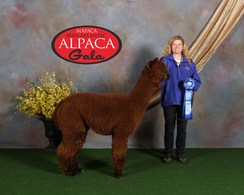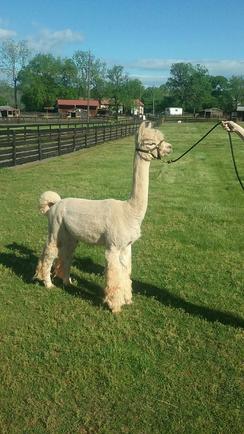Time of Breeding Can Influence Cria Gender Ratios in Alpacas
Theriogenology Veterinary Journal 2017
Kim Gleason, PhD1, Lynn Edens2, Arturo Pena2
1 Dancing Horse Farm, Pemberton, NJ 08068, 2 Little Creek Farm, North Salem, NY 10560
The control of gender for economic gains in livestock production has been widely investigated, and anecdotally unsuccessful. Production gender ratios are generally left to chance, except for usage of commercial sperm sorting or other invasive and costly reproductive technologies. The objective of this randomized prospective study spanning 6 years was to investigate the role of hand breeding alpacas at certain times of day to achieve preconceptual gender selection. A total of 92 hembras from 2 production farms located in the Northeast region of the United States were included in this study regardless of age, parity, or previous cria’s gender. Hembras were randomly assigned to 1 of 2 breeding seasons, either Spring/Summer (May-August) n= 39 or Fall (September-November) n=53. They were then tested for receptivity and each was hand bred at a random time on the day of male acceptance, from 7:00am-7:00pm. Location, time of breeding and gestational length was recorded for each hembra, and subsequent cria gender was confirmed at parturition. Breeding times were consolidated into 3 groups in each breeding season, <9:00am, 9:00am-4:30pm and >4:30pm based on natural breaks in gender ratios. Data were analyzed for effects of time of breeding on gender ratio using Fisher’s exact and Odds Ratio statistical methods. Gestational length did not differ for male or female gestations (345 vs 343 days). Additionally, there was no effect of location of breeding, and thus implied management variability, on gender ratios (p>1.0). However, results revealed that cria gender ratios were altered by time of breeding irrespective of breeding season (p<0.05). For spring/summer season, breeding at or before 9:00am resulted in 100% females (n=10), compared to breeding between 9:30am-4:30pm which resulted in 46% females and 54% males (n=11 and 13 respectively). Although a smaller subset, a dramatic shift occurred with breedings after 4:30pm, resulting in only 1 female and 4 males. Similarly for the Fall breeding season, 74% female cria resulted from breedings prior to 9:00am (n=22), followed by 50% females and 50% males breeding between 9:30am and 4:30pm (n=28). Only 1 breeding occurred after 4:30 pm during Fall, presumably due to shorter daylight lengths, and that single breeding resulted in a male cria. Results of this study are the first report describing a simple managerial practice to alter gender ratios in alpacas. Breeding early in the morning favored selection for female gestations, whereas breeding in evenings during this study resulted in more male cria. Interestingly, midday breedings tended to result in gender ratios similar to that observed on both farms prior to initiation of this study with combined 53% females and 47% males recorded for over 300 births. Given the lengthy gestations in alpacas, being able to preconceptually control gender could revolutionize the alpaca industry in this country, both in terms of economic growth and also increased textile development through larger production herds.
Keywords: alpaca,cria,gender ratio
January 08, 2025







